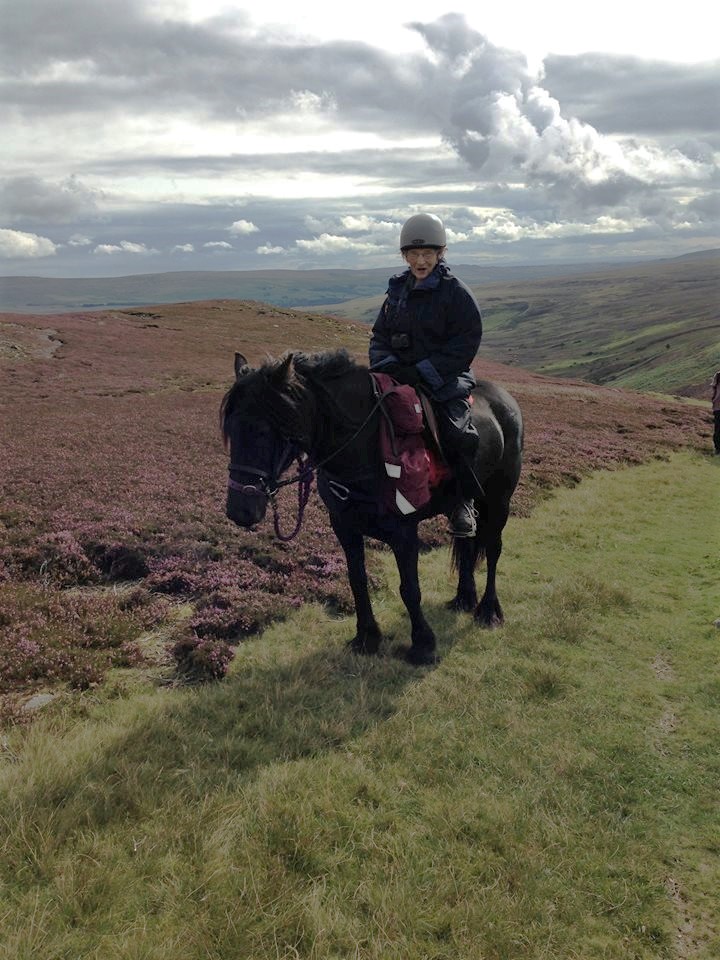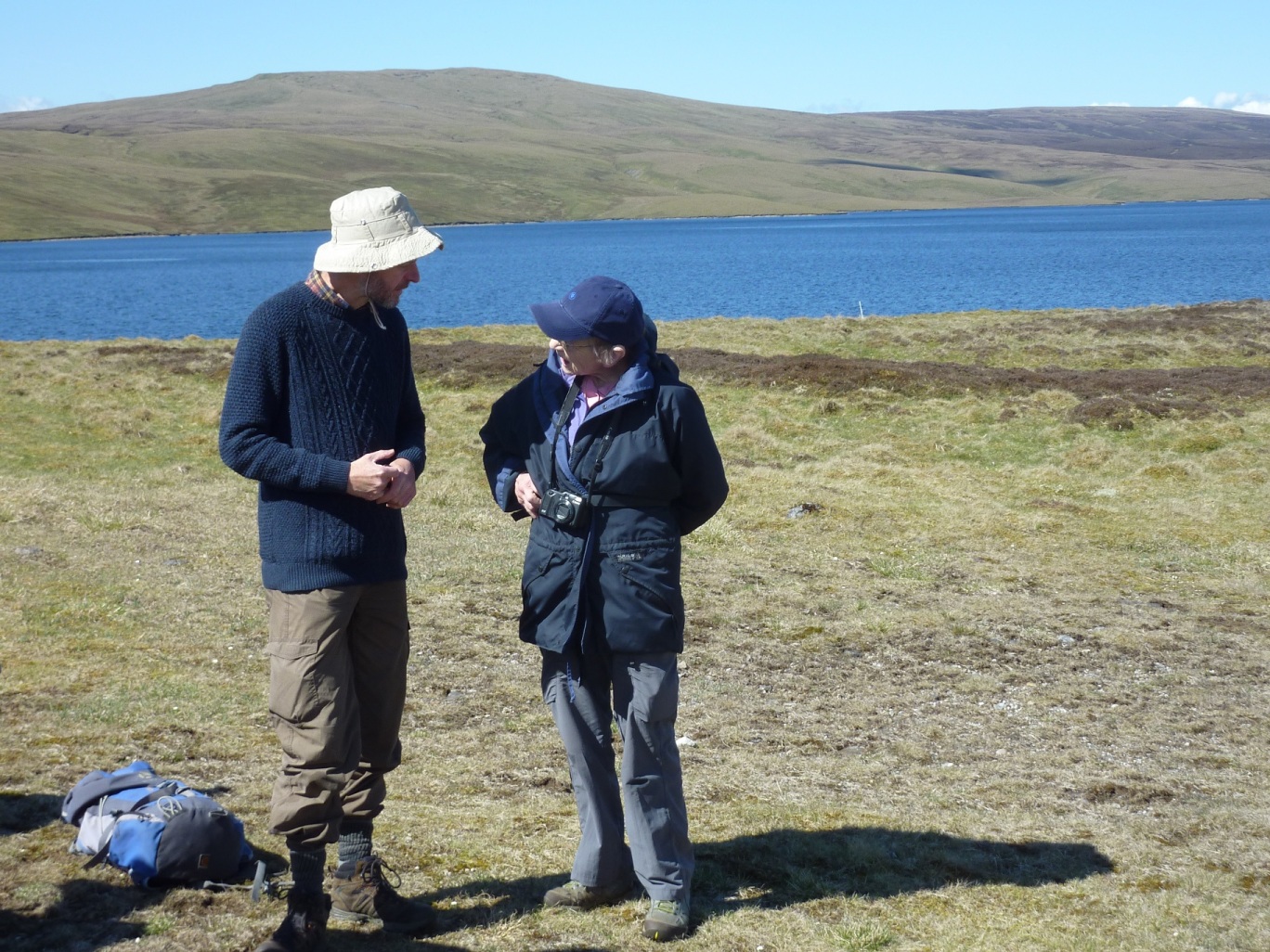Over the winter I compared our survey results from 2017 to 2019 for 19 of the special plants, to results from a survey from 1968 to 1975 of the same species in the same areas on Widdybank Fell. I was shocked by what I found. All 19 species have declined in extent! On average, these species were not found in over half of the areas they grew in 50 years ago.
The map below shows the situation for Spring gentian Gentiana verna. In the area shown, towards the upper end of Red Sike, Spring gentian was mapped in all of the orange squares (638 squares) in the older survey. Each square is ten metres by ten metres. The blue dots show which squares (353 squares) we found it in from our more recent survey. The yellow squares show which other squares were searched, but did not have any Spring gentian either time.

There are some blue dots on yellow squares, meaning that we found it in the last few years in some areas where it was not found in the original survey. But there are many more orange squares with no blue dots, meaning that we did not find it in many areas where it was present before. Overall there has been a 45% decline in the number of squares occupied by Spring gentian between the two surveys.
Several of the other special species have suffered even worse declines in extent. Alpine rush Juncus alpinoarticulatus has declined by 85%, mountain everlasting Antennaria dioica by 81% and northern bedstraw Galium boreale by 62%.

The map below shows how many of the special species have been lost from different parts of the upper half of the Red Sike area. The darker dots are in the squares that have lost more species. The full extent of the sugar limestone habitat along red Sike is not shown on this map, but overall the trend is that more species have been lost from areas of sugar limestone habitat further into the fell and away from the track.

The grazing intensity on the fell has been much lower in the past 20 years or so compared to previously and the vegetation in the sugar limestone areas is no longer as short and open as it used to be. The vegetation tends to be even longer and more closed further into the fell, suggesting that the sheep have not been visiting these areas as frequently as the areas closer to the track.
We are working with Natural England on various options for adressing this, including remedial restoration work (by cutting) in some areas and re-considering the optimum numbers of sheep to have on the fell. Our data is very useful for informing these decisions.
Before doing this comparison of the two survey results, I was aware that some of the special plants had probably declined and that the habitats supporting them was probably sub-optimal now in many places. But I was genuinely shocked and saddened by just how much these species had declined and by the fact that all of them had declined.
As if this was not bad enough, the special species are also declining in population size in the places that they still grow in. The results described above only tell us about changes in extent, in other words, changes in areas occupied by the plants. A dot on the map could mean that 1 plant was present, or that many hundreds of plants were present.
| Species | 1968-1977 | 2002-2010 | % decline |
| Draba incana | 451 | 1 | 100% |
| Polygala amarella | 531 | 13 | 98% |
| Viola rupestris | 976 | 406 | 58% |
| Primula farinosa | 665 | 376 | 43% |
| Carex ericetorum | 61 | 43 | 30% |
| Average (mean) decline | 66% |
The table above shows the results from two other surveys that counted numbers of plants in permanently-marked monitoring plots. These plots were set up by Margaret in 1968 and plant numbers were counted by her and volunteers every year from 1968 to 1977. This same survey was then repeated each year from 2002 to 2010. All five species showed substantial declines in population size. On average, the number of plants of these special species declined by two-thirds in the thirty years or so between the two survey periods.

These depressing results suggest that the special flora of Upper Teesdale has not been receiving enough attention for a while. Results like these from detailed surveys with sound methodologies give us strong evidence to back up what Margaret has been saying for many years about the general decline in the Teesdale flora.
















